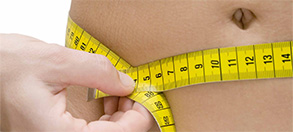
Two of the most popular diets — the keto diet and the Mediterranean diet — are popular for very different reasons. Though they have very different philosophies, both have been proven to be effective. Here is an overview of each diet, what makes it so appealing (and effective) and what types of foods you can eat while following them.
What is the Keto Diet?
The keto diet is based on a macronutrient profile that is fairly extreme. It requires you eat a lot of fat, a moderate amount of protein, and a (very) small amount of carbs. Keto typically recommends calories come from:
- 60-75% fat
- 15-30% protein
- 5-10% net carbs (which means total carbs minus fiber)
Keto’s popularity is largely due to the numerous celebrities who have successfully lost weight following the diet. Halle Berry, multiple Kardashians, Victoria’s Secret model Adriana Lima, and even athletes have tried keto.
The theory behind the keto diet is based on the types of calories our body uses for energy. Primarily, our bodies turn first to carbohydrates to sustain itself. After that, it goes to your fat reserves. Therefore, for keto to be effective, your body must be able to burn through all its carb reserves so it can move on to its fat reserves.
At this point — typically about a week into the diet, but the time can vary — your body is in a state called “ketosis.” This means your body has run out of glucose (typically from carbs) and it’s using fat to sustain itself instead. Your body turns the fat into ketones, and then sends them to the rest of your body to use as an energy source.
This is actually how humans can go so long without eating, and is part of the reason the keto diet is so effective at helping people lose weight (assuming they can get into ketosis). In a sense, your body is eating itself (but you’re not starving).
The tricky part about the keto diet is eating enough fat to make the diet effective.
Because your carb macros are so low, it’s difficult for most people to stay within those limits. Something as simple as a banana can mess up your ratios for the day.
Something else that often trips people up on the keto diet is the massive calorie count. Fats tend to be high in calories. For example, one ounce of cheese is typically about 110 calories. One avocado is over 300 calories. One tablespoon of olive oil is about 120 calories. For people who are used to logging their food using popular food-tracking apps, this is a difficult hurdle to overcome.
When most of us think of dieting, we think of cutting back on the number of calories we’re consuming (it takes a 500-calorie deficit to lose one pound). But on the keto diet, you have to throw that thought out the window. If you’re following keto properly, you’re probably eating the highest number of calories you’ve ever consumed on a diet.
Remember that the success of this diet is dependent upon your body being in a state of ketosis. If your body leaves ketosis for too long, you may start gaining weight because of the high caloric count involved.
Keto Diet Foods
Because keto has become so popular, there are tons of lists on the internet full of keto-approved foods. Here is a brief list to get you started:
- Unprocessed meat (seafood, beef, or poultry — just keep in mind that proteins should be kept at a maximum 30% of your macronutrients)
- Eggs
- Leafy greens
- Avocados
- Olive and Coconut oil
- Nuts and Seeds (check which types have lower carbs)
- Dairy (stick to full-fat here — you want to make sure you’re getting that high fat count)
- Vegetables low in starch (generally stick to things that grow above-ground)
- Berries (overall, you’ll want to restrict fruit, but berries are high in fiber, therefore lowering your net carb count)
- Dark Chocolate (milk chocolate has more sugar)
The most important factor in determining what you can eat on the keto diet is the number of net carbs your food has (keto recommends sticking between 20 and 25g net carbs per day). While logging your food can be an odd experience at times, it’s still important you do it because this process (especially in an app) will help you determine your macros.
But if you’re traveling or eating in a restaurant, look for ingredients you know are very low-carb, or make adjustments to your order. For example, you could skip the bun on a cheeseburger, and sub a side salad for the french fries — just watch the dressing. Some dressing is loaded with fat (which is perfectly fine in this case), but others are loaded with sugar.
It may take some time to get the hang of it, but once you do, it’ll be second nature. When in doubt, stick to whole foods, like a baked chicken breast (no breading) or eggs with avocado and bacon.
What Makes the Keto Diet So Appealing?
It seems that nearly everyone wants to try the keto diet at least once.
For those who feel stifled by traditional diets (particularly the 1990’s-era mindset that eating fat makes you fat) the keto diet seems quite fascinating. Butter is suddenly allowed? Burgers are back on the table? Salad dressing isn’t frowned upon? Frankly, the more appropriate question is: who wouldn’t want to get on board with this idea?
Eating bacon cheeseburgers topped with avocado goes against all our traditional diet ideas, and when coupled with the massive weight loss (and substantial energy boost) some people see on keto, it seems too good to be true. And yet, it seems that nearly everyone wants to try it at least once.
Again, it may seem like keto is a pretty easy plan to follow, but it’s very difficult to cut carbs that low. Because being in ketosis is so crucial for the success of the diet, it’s important to log your food accurately to monitor your macronutrients.
What is the Mediterranean Diet?
The Mediterranean diet is based on the eating habits of people who live in countries along the Mediterranean Sea, such as Spain, Greece, Israel, Lebanon, and Turkey. It’s one of the most balanced diets out there and some believe it’s also one of the healthiest — particularly for your body and brain.
One of the reasons for its popularity is its simplicity. For the most part, this diet plan involves eating whole foods (as opposed to processed foods). If you’re accustomed to eating fast food or pre-prepared frozen dinners, the biggest adjustment upon switching to this diet will likely be time to plan meals and prepare food.
Mediterranean Diet Foods
Like many other diets, fruits, vegetables and whole grains are a part of the Mediterranean diet — in fact, this diet primarily focuses on eating a plant-based diet (but doesn’t force you to give up meat entirely). There are just a few additional recommendations, such as including monounsaturated fats (like those found in nuts, seeds and cooking oil), using herbs and spices and restricting red meat. Because olives and fish are native to this region, it makes sense that olives, olive oil and seafood are staples of this diet.
Here is a partial list of recommended foods on the Mediterranean diet:
- Fruits
- Vegetables
- Whole grains
- Fish
- Poultry (fish and poultry are recommended at least twice per week)
- Olive or Canola Oil (in the place of butter)
- Nuts and Seeds
- Legumes (such as peas and beans)
- Plenty of herbs and spices to season food (limiting salt)
- Red wine (optional, and in moderation)
Additionally, the Mediterranean diet emphasizes sharing meals with friends and family, and getting plenty of exercise.
What Makes the Mediterranean Diet So Appealing?
One of the major selling points to the Mediterranean diet is that it affords a degree of flexibility because the basis of the plan is to incorporate it into your life long-term. The Mediterranean diet is a lifestyle, not a short-term fad. Therefore, if you eat too much cake on your birthday or gorge on pasta one night, there’s no need to force yourself through a shame spiral. You can get back on track the following day — you just treated yourself.
To some extent, the rule of thumb really is “everything in moderation.” You’re allowed to have a glass of wine with dinner. You’re allowed to have dessert every now and then. As long as you’re constantly going back to the base of the diet, you’ll remain on track.
The reason people keep coming back to the Mediterranean diet is because it’s easy to follow, includes delicious foods and doesn’t leave you feeling starved or unsatisfied. There’s no pressure to count calories or meticulously track macros — you simply eat foods on the approved list and keep your diet as balanced as possible.
Which Diet is Right for You?
Choosing which diet is right for you depends on many factors, but arguably, the two most important are what restrictions you feel you can stick to, and what your goals are.
While the keto diet may provide great short-term results, sticking to it long-term could prove challenging. While eating a lot of bacon might seem appealing in the short-term, it’s difficult to stick to a diet that prevents you from eating foods that are usually considered healthy, like many fruits and nuts.
By contrast, the Mediterranean diet is considered to be one of the healthiest possible diets, regardless of how long you want to stick to it. It’s also easy to follow, which helps people maintain or lose weight over time. However, it’s not likely to provide you with results as quickly as keto.
If you’d like help figuring out which course of action to take, we’d be more than happy to help! At Houston Weight Loss, we offer weight loss counseling, in addition to appetite suppressant therapy and supplements to help you along the way. Contact us today to book a consultation!



